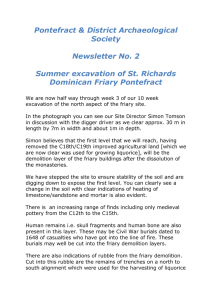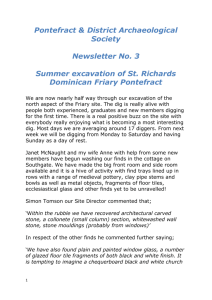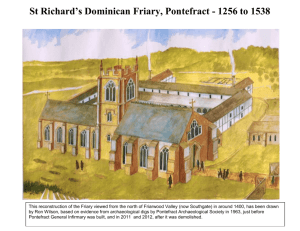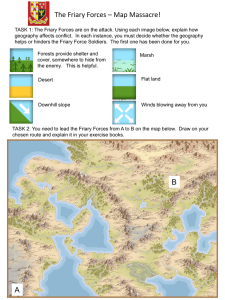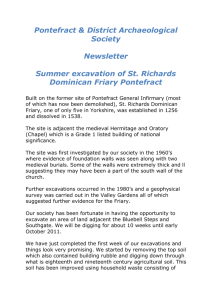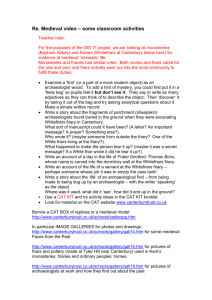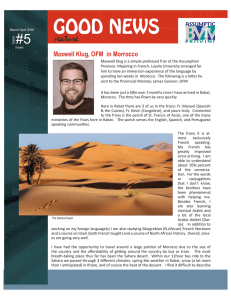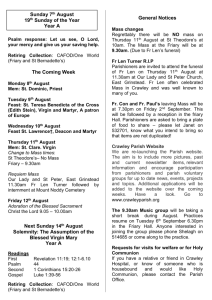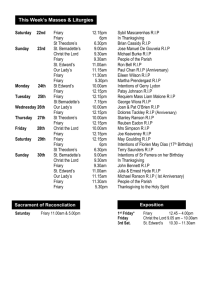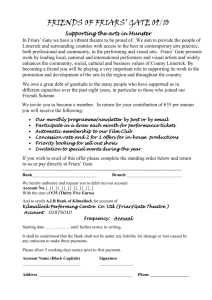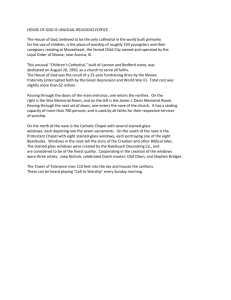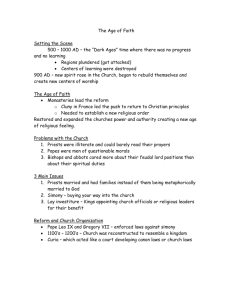Newsletter No7
advertisement
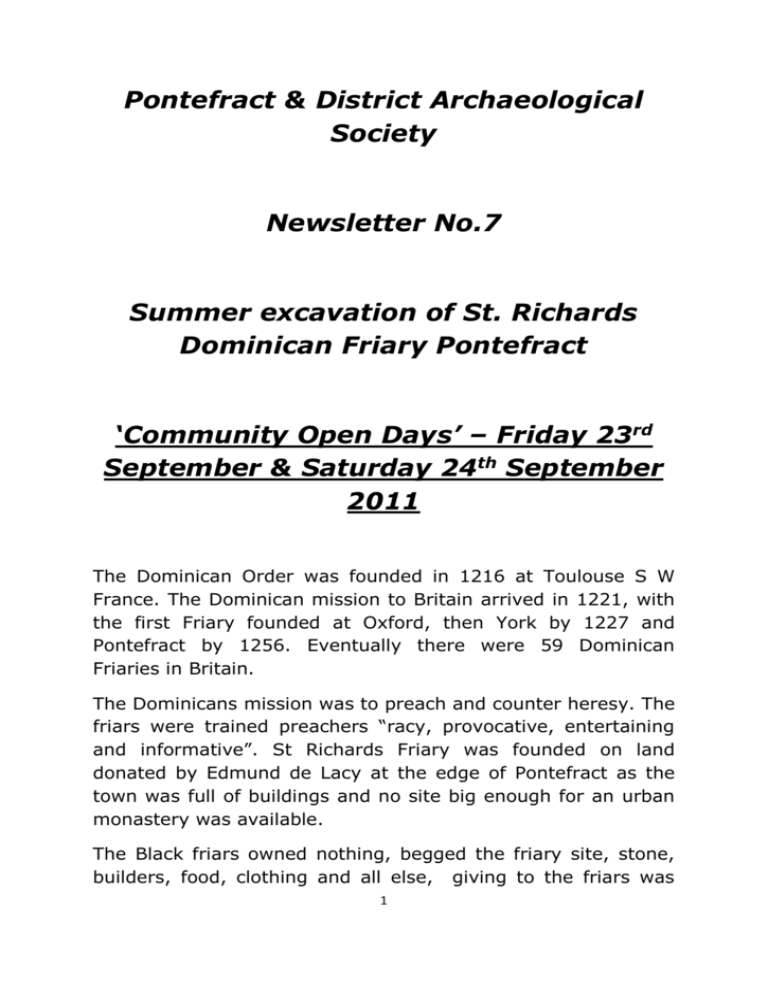
Pontefract & District Archaeological Society Newsletter No.7 Summer excavation of St. Richards Dominican Friary Pontefract ‘Community Open Days’ – Friday 23rd September & Saturday 24th September 2011 The Dominican Order was founded in 1216 at Toulouse S W France. The Dominican mission to Britain arrived in 1221, with the first Friary founded at Oxford, then York by 1227 and Pontefract by 1256. Eventually there were 59 Dominican Friaries in Britain. The Dominicans mission was to preach and counter heresy. The friars were trained preachers “racy, provocative, entertaining and informative”. St Richards Friary was founded on land donated by Edmund de Lacy at the edge of Pontefract as the town was full of buildings and no site big enough for an urban monastery was available. The Black friars owned nothing, begged the friary site, stone, builders, food, clothing and all else, giving to the friars was 1 seen as an act of Christian charity by the population. The Pontefract Black friars were allocated a territory in which to preach and beg encompassed by Pontefract, Rotherham and Wakefield. From 1330 onwards the Pope awarded the Friars the power to preach, hear confessions and bury the dead. Many townsfolk in Pontefract left small legacies to the Friars and requested to be buried in the Friary lay cemetery. The Friary comprised a large `preaching box` church with narrow chancel and large nave, cloister, dormitory, chapter house, refectory, kitchens, lavatories and guest accommodation. All the friary buildings lay south of the church ranged around the cloister, today lying below the demolished former hospital site. The Friary was dissolved by King Henry VIII in 1538 and surrendered to the crown. The two bells and roof lead were stripped and sold as was the entire site; the buildings were demolished for their stone, wood, glass and fittings and sold. The site reverted to agricultural use as pasture and later became liquorice fields. The hospital eventually spread over the site after the foundation of the dispensary in the late 1890’s. What we have found so far Our excavation has found the north wall of the Friary church nave. The wall is 75cm wide and set on a deep rock-cut foundation. The wall has been later buttressed to bear the weight of additions, possibly the construction of a nave clerestory (raised upper story above the nave with high windows to provide additional light into the church). The east wall of the nave north aisle, this too was later buttressed (twice) reusing a broken grave cover slab. Part of 2 an altar (there would have been several) base survives within the church against the whitewashed east wall. After the dissolution both of the walls indicate that the stone had been removed and sold, a process known as `robbing`. Multiple fragments and whole pieces of stone window tracery from one of the north wall gothic windows, the interior faces of which are whitewashed too. Fragments of painted window glass and the lead cames into which it was set have been found too. Graves of the lay cemetery lying north and east of the church, there is a particularly dense cluster of graves outside the east wall of the church while some on the north side are almost touching the wall. A rare, high status, Purbeck `marble` sarcophagus, once set into a wall niche, later pulled out, broken open and ransacked, the bones of the occupant left scattered around it. The tomb had once held a high status burial. The sarcophagus was imported, probably from Barrack in Cambridgeshire or perhaps from Purbeck in Dorset. Fragments of fine decorative stonework probably from the tomb niche décor were also found nearby. A single burial had been cut into the demolition debris from the church; it is possible that this individual may have been a civil war casualty 1645-48. A 5’ deep cultivation soil covered the site of the former church, this soil was improved and manure with waste from 3 the town and used for the cultivation of liquorice from the 18th to the 20th century, the deep harvesting trenches can be seen in the soil section on the northern edge of the excavation. We have also found a significant amount of medieval pottery, painted window glass, clay pipes covering 400 years of history, metal objects, animal bones oyster shells etc. 4
